Related Research Articles

James Randi was a Canadian-American stage magician, author and scientific skeptic who extensively challenged paranormal and pseudoscientific claims. He was the co-founder of the Committee for Skeptical Inquiry (CSI), and founder of the James Randi Educational Foundation (JREF). Randi began his career as a magician under the stage name The Amazing Randi and later chose to devote most of his time to investigating paranormal, occult, and supernatural claims. Randi retired from practicing magic at age 60, and from his foundation at 87.
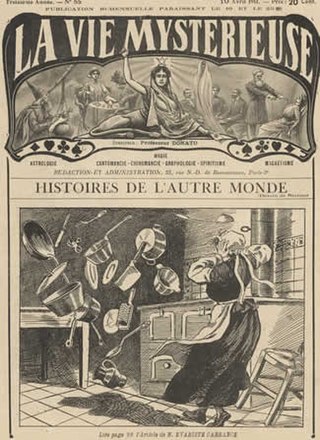
In German folklore and ghostlore, a poltergeist is a type of ghost or spirit that is responsible for physical disturbances, such as loud noises and objects being moved or destroyed. Most claims or fictional descriptions of poltergeists show them as being capable of pinching, biting, hitting, and tripping people. They are also depicted as capable of the movement or levitation of objects such as furniture and cutlery, or noises such as knocking on doors. Foul smells are also associated with poltergeist occurrences, as well as spontaneous fires and different electrical issues such as flickering lights.
A haunted house, spook house or ghost house in ghostlore is a house or other building often perceived as being inhabited by disembodied spirits of the deceased who may have been former residents or were otherwise connected with the property. Parapsychologists often attribute haunting to the spirits of the dead who have suffered from violent or tragic events in the building's past such as murder, accidental death, or suicide.
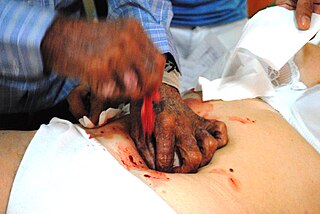
Psychic surgery is a pseudoscientific medical fraud in which practitioners create the illusion of performing surgery with their bare hands and use sleight of hand, fake blood, and animal parts to convince the patient that diseased lesions have been removed and that the incision has spontaneously healed.
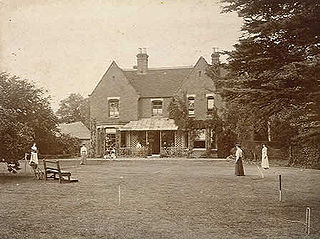
Borley Rectory was a house located in Borley, Essex, famous for being described as "the most haunted house in England" by psychic researcher Harry Price. Built in 1862 to house the rector of the parish of Borley and his family, the house was badly damaged by fire in 1939 and demolished in 1944.

Harry Price was a British psychic researcher and author, who gained public prominence for his investigations into psychical phenomena and exposing fraudulent spiritualist mediums. He is best known for his well-publicised investigation of the purportedly haunted Borley Rectory in Essex, England.

The Enfield poltergeist was a claim of supernatural activity at 284 Green Street, a council house in Brimsdown, Enfield, London, England, between 1977 and 1979. The alleged poltergeist activity centred on sisters Janet (11) and Margaret Hodgson (13).

William G. Roll was an American psychologist and parapsychologist on the faculty of the Psychology Department of the University of West Georgia in Carrollton, Georgia. Roll is most notable for his belief in poltergeist activity. He coined the term "recurrent spontaneous psychokinesis" (RSPK) to explain poltergeist cases. However, RSPK was never accepted by mainstream science and skeptics have described Roll as a credulous investigator.

Mediumship is the belief in the practice of mediating communication between familiar spirits or spirits of the dead and living human beings. Practitioners are known as "mediums" or "spirit mediums". There are different types of mediumship or spirit channelling, including séance tables, trance, and ouija. The practice is associated with Spiritualism, Spiritism, and some New Age groups.

Andrija Puharich — born Henry Karel Puharić — was a medical and parapsychological researcher, medical inventor, physician and author, known as the person who brought Israeli Uri Geller and Dutch-born Peter Hurkos (1911–1988) to the United States for scientific investigation.

Thoughtography, also called projected thermography,psychic photography,nengraphy, and nensha(Japanese: 念写), is the claimed ability to "burn" images from one's mind onto surfaces such as photographic film by parapsychic means. While the term "thoughtography" has been in the English lexicon since 1913, the more recent term "projected thermography" is a neologism popularized in the 2002 American film The Ring, a remake of the 1998 Japanese horror film Ring.
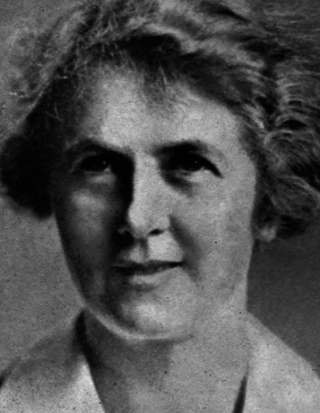
Mina "Margery" Crandon was an American psychic medium who said that she channeled her dead brother, Walter Stinson. Investigators who studied Crandon concluded that she had no such paranormal ability, and others detected her in outright deception. She became known as her alleged paranormal skills were touted by Sherlock Holmes author Sir Arthur Conan Doyle and were disproved by magician Harry Houdini. Crandon was investigated by members of the American Society for Psychical Research and employees of the Scientific American.
Joe Nickell is an American skeptic and investigator of the paranormal.

Ectoplasm is a term used in Spiritualism to denote a substance or spiritual energy "exteriorized" by physical mediums. It was coined in 1894 by psychical researcher Charles Richet. Although the term is widespread in popular culture, there is no scientific evidence that ectoplasm exists and many purported examples were exposed as hoaxes fashioned from cheesecloth, gauze or other natural substances.
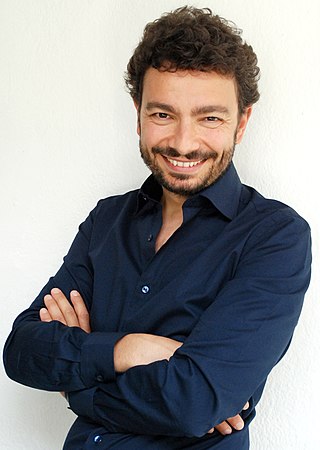
Massimo Polidoro is an Italian psychologist, writer, journalist, television personality, and co-founder and executive director of the Italian Committee for the Investigation of Claims of the Pseudosciences (CICAP).
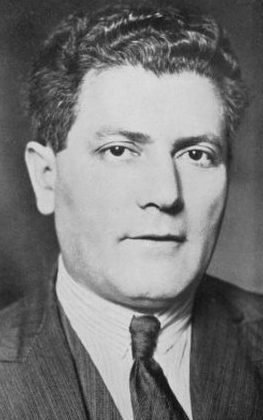
Nandor Fodor was a British and American parapsychologist, psychoanalyst, author and journalist of Hungarian origin.

Hereward Carrington was an American investigator of psychic phenomena and author. His subjects included several of the most high-profile cases of apparent psychic ability of his times, and he wrote over 100 books on subjects including the paranormal and psychical research, conjuring and stage magic, and alternative medicine. Carrington promoted fruitarianism and held pseudoscientific views about dieting.

Telekinesis, also known as Psychokinesis, is a hypothetical psychic ability allowing an individual to influence a physical system without physical interaction. Experiments to prove the existence of telekinesis have historically been criticized for lack of proper controls and repeatability. There is no reliable evidence that telekinesis is a real phenomenon, and the topic is generally regarded as pseudoscience.
Rita Goold was a British psychic and spiritualist medium from Leicester.
Anita Gregory was a German-born British psychologist and parapsychologist. Gregory was a lecturer at the Polytechnic of North London. She was a member of the Society for Psychical Research and conducted experiments with the British psychic Matthew Manning.
References
- ↑ "Unsolved Mysteries: Episode #238" . Retrieved March 27, 2009. Original U.S. airdate: May 19, 1993.
- 1 2 3 Hines, Terrence, Pseudoscience and the Paranormal, Prometheus Books (2003). pp. 98–100. ISBN 978-1573929790
- ↑ Gordon, Henry, Extrasensory Deception: ESP, Psychics, Shirley MacLaine, Ghosts, UFOs, Macmillan of Canada (1988). p. 107. ISBN 978-0771595394
- ↑ Goode, Erich, Paranormal Beliefs: A Sociological Introduction. Waveland Pr Inc. (2000). p. 193. ISBN 978-1577660767
- ↑ Kurtz, Paul, A Skeptic's Handbook of Parapsychology. Prometheus Books (1985). p. 220. ISBN 978-0879753009
- 1 2 3 4 5 6 Susan Horn, editor/publisher (January 20, 2008). Carroll Star News. Carrollton, Georgia USA: Georgia Rail and Press Company.
{{cite book}}:|author=has generic name (help)"The real story of Christina Resch Boyer: Did a 'perfect storm' of events lead to life imprisonment?" A lengthy front page story with color photo in which the publisher calls for a reexamination of the legal case by the Georgia Board of Pardons and Paroles. - ↑ Sady Doyle (13 August 2019). Dead Blondes and Bad Mothers. Melville House Publishing. p. 13. ISBN 9781612197920. OCLC 1104214645.
- 1 2 Couttie, Bob (1988). Forbidden Knowledge: The Paranormal Paradox. Lutterworth Press. pp. 60–61. ISBN 9780718826864. OCLC 17263288.
- 1 2 Dunning, Brian. "Skeptoid #448: The Columbus Poltergeist". Skeptoid .
- ↑ Wynn, Charles M. and Arthur W. Wiggins, Quantum Leaps in the Wrong Direction: Where Real Science Ends...and Pseudoscience Begins, Joseph Henry Press (2001). p. 99. ISBN 978-0309073097
- 1 2 3 Kendrick Frazier (27 January 2011). Science Confronts the Paranormal. Prometheus Books. pp. 152–. ISBN 978-1-61592-619-0.
- ↑ Nickell, Joe, The Outer Edge: Classic Investigations of the Paranormal, Committee for the Scientific Investigation of Claims of the Paranormal (1996). p. 118. ISBN 978-1117887708
- 1 2 Randi, James, The Columbus Poltergeist Case: Part I. Skeptical Inquirer 9: 221–35. (1984–85). ,
- ↑ Paul Kurtz (10 September 2013). The Transcendental Temptation: A Critique of Religion and the Paranormal. Prometheus Books. pp. 403–. ISBN 978-1-61614-828-7.
- ↑ "Magician believes Tina Resch created house monster". (Associated Press) Beaver County Times. Mar 15, 1984.
- ↑ "Paranormal events can't withstand close scrutiny, researcher says". The Milwaukee Journal. May 31, 1984. Retrieved 14 November 2013.
- ↑ "Mother pleads guilty in fatal beating of girl". Rome News Tribune. Retrieved February 24, 2014.
- ↑ "Caroll Case Due in Floyd". Rome News Tribune. October 21, 1994. Retrieved February 24, 2014.
- ↑ "Psychic Mom Get Life for Murder of Toddler". Daily News. October 27, 1994. Retrieved February 24, 2014.
- ↑ Harden, Mike (15 May 1993). "Victim or Perpetrator". Scripps Howard News Service. Retrieved 18 July 2017.
- 1 2 "'Mysteries' on Resch a Stumper Itself". The Columbus Dispatch (Home Final ed.). Newsbank. 23 May 1993. p. 03F. Retrieved 18 July 2017.
- 1 2 "Georgia Department of Corrections" . Retrieved February 24, 2014.
- 1 2 "Atlanta Journal Constitution "Telekinetic Mom" newspaper stories". October 25, 1994. Retrieved 2008-02-24. Articles on Tina Resch Boyer in the archives of the Atlanta Journal-Constitution published October 24, 1994.
- ↑ Roll, William and Valerie Storey, Unleashed: Of Poltergeists and Murder: The Curious Story of Tina Resch, Simon & Schuster (2004). ISBN 978-0743482943